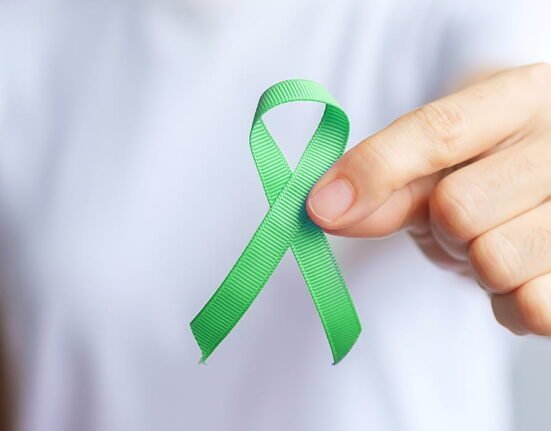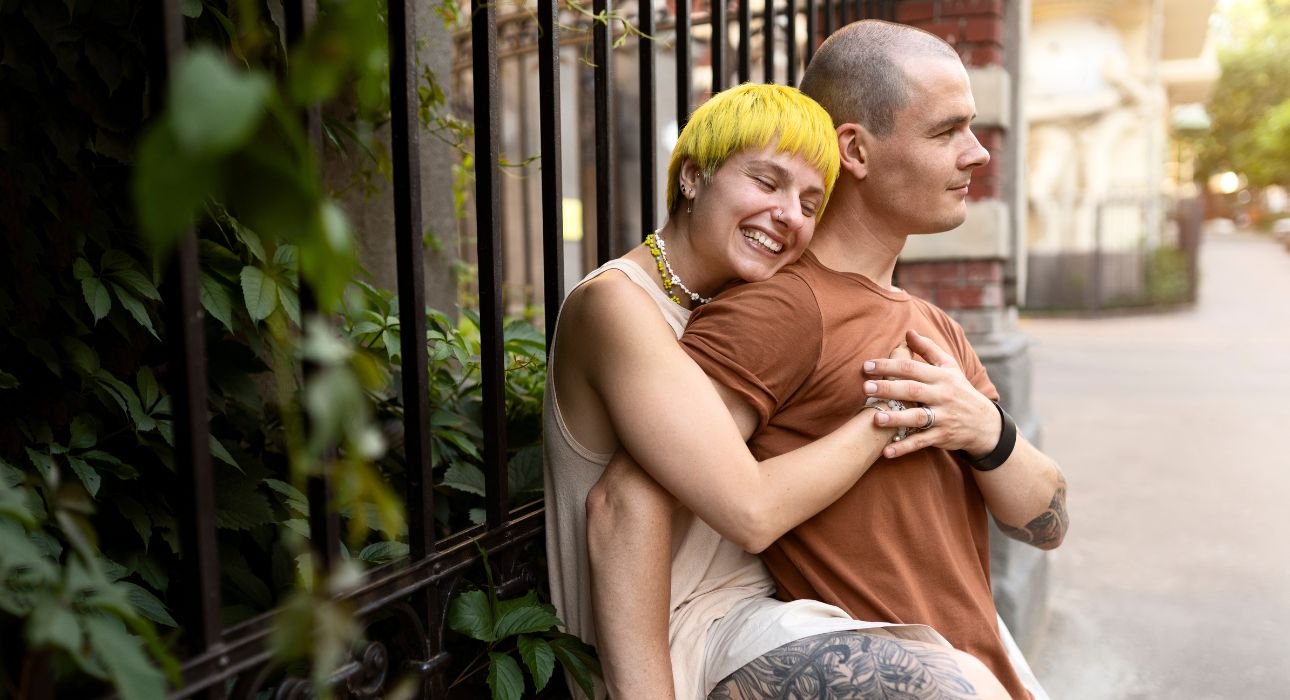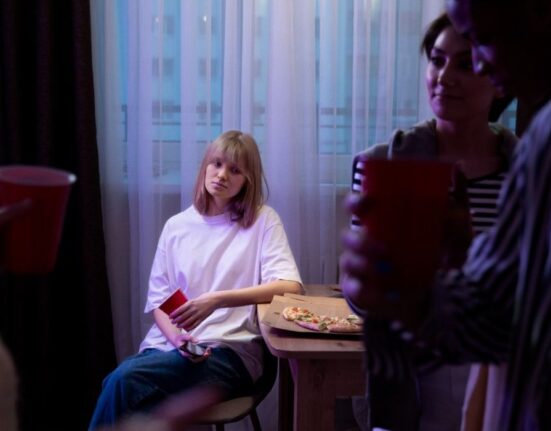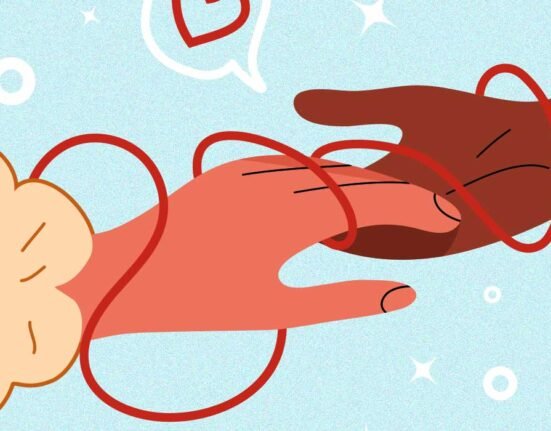When you live in such a world that seems to be neurotypical-centric, even the traditional concept of being compatible based on sharing interests, cues, and routines seems to be archaic. Love usually implies the discovery of new rules when the autistic partner or partners, ADHD, dyslexic, or neurodivergent in general, appear. Researchers underline the neurodiversity model that considers brain diversity as a normal change rather than an inconvenience. As Harvard Health notes, “there is no one ‘right’ way of thinking, learning, and behaving, and differences are not viewed as deficits” (Psychology Today, n.d.). Practically, this implies that getting along does not imply conforming to a mold, but the sharing of understanding and the accommodation process by being creative.
Read More: The Internal Working Model of Relationships: How We Subconsciously Predict Love?
Rethinking Compatibility: Beyond “Opposites Attract”
Psychological research reminds us that even among neurotypicals, “opposites don’t attract—likes do.” Couples tend to thrive when they share values, traits, or communication styles. For neurodiverse couples, shared understanding can be the bridge. One Autism advocate observes that autistic people often find it easier to relate to another autistic person: they can be direct with each other, don’t have to “camouflage,” and naturally “understand” each other’s sensory issues and passions (Embrace Autism, n.d.). In other words, compatibility may look different (and often more natural) when both partners speak the same cognitive “language,” even if it diverges from the neurotypical script.
The emerging “double empathy” concept highlights this two-way dynamic. Traditional theory of mind (ToM) posits that individuals understand others’ feelings by intuiting hidden thoughts, but recent work shows this often fails when neurotypes differ. Instead, misunderstandings are reciprocal: autistic and non-autistic partners can equally struggle to interpret each other’s cues (Psychology Today, n.d.; Embrace Autism, n.d.). One autistic writer puts it bluntly: “Autistic people know better than most that we can’t really know what another person is thinking or feeling.” Successful partnerships in neurodiverse love come from accepting multiple ways of communicating rather than blaming one partner (Reframing Autism, n.d.).
Read More: How Stonewalling Harms Relationships—and How to Overcome It
Communication, Attachment, and Emotional Styles
Communication differences are a central part of the puzzle. Neurodiverse partners may develop their own shared language or routines. For example, experts recommend clear and explicit communication: using “I” statements (e.g., “I feel X when Y happens”) so that each person owns their experience (Autism Spectrum News, n.d.-a). Scheduled check-ins, written notes or agreed “timeout” signals can help, since many neurodivergent people need extra processing time. Autistic individuals might prefer very direct, explicit conversation, while an ADHD partner might speak rapidly and jump off topic. Acknowledging these patterns prevents endless mind-reading and frustration.
Attachment theory also finds new contours in neurodiverse love. Some traits of autism—inflexibility, intense sensitivity, emotional dysregulation—can mimic what attachment theory labels a “fearful/disorganised” style. Yet this often reflects neurological differences (like alexithymia or sensory overload) rather than a history of neglect. For instance, Dr. Shorey notes that someone who seems “clingy-then-avoidant” in a relationship might simply be autistic (Psychology Today, n.d.). Recognising this can prevent mislabeling—instead of thinking “my partner has a bad attachment style,” we learn to see why an autistic person might react anxiously or appear disengaged.
Read More: Boundaries in Neurodivergent Relationships: Why They Matter
Strengths, Challenges, and Realities
All relationships are hard; neurodiverse couples experience a few peculiarities and hardships, and a few advantages are unique, too. Themes are pointed out in both research and personal accounts without judgment. A good example is that a veteran therapist enumerates ADHD-associated challenges such as distractibility, impulsivity or touchiness, and autism-related differences such as social communication tics, long-standing special fascinations, poor adaptability to feminine censure, sensory snugness, or silver-spoon all-or-nothing. Rejection-sensitive dysphoria, the feeling of being very hurt due to perceived criticism, is also another typical ADHD reaction, and it causes strain in any relationship. This is not a failure to be a certain type of person, but differences in the way the brain is wired.
Yet neurodivergence also brings gifts. Passionate interests can translate into extraordinary focus or creativity. The ability to think nonlinearly can spark innovation. Many ADHD+autistic couples find their traits complement each other: one partner’s spontaneity and energy balance the other’s stability and deep focus. (As one blog notes, an autistic partner may ground a bubbly ADHD spouse, while the latter encourages flexibility and new experiences (Horkan, n.d.). In other words, strength and challenge often come as a package. Couples learn to lean into the positives—seeing, for instance, how an intense special interest can become a shared project—and negotiating accommodations on the friction points, rather than expecting each other to be like them.
A crucial attitude shared by neurodiverse advocates is acceptance. Stevie Lang, an autistic author, found that letting go of rigid “neurotypical” checklists was liberating: “my relationships … will look fundamentally different from those depicted in the neurotypical relationships’ literature” (Reframing Autism, n.d.). She did not care to ask herself why they were not doing love like the movies portray it, but had to concentrate on what suited her and her partners.
This frequently implies custom solutions: effective use of non-verbal communication to defuse conflict, or limitation of chats to 20 minutes in the case of necessary reduction. It can also imply the adoption of a variety of relationship models. According to Lang, the reality is that most autistic individuals feel non-traditional lifestyles—whether they are living separately, or practising consensual non-monogamy—are more appropriate to their needs. Personal example: polyamory, which involves certain agreements and communication, was enough to receive more honest relationships and even teach the couple to be clear about their needs.
The main lesson should be that effective neurodivergent relationships frequently have a specialised compatibility: A couple writes their own rules.
Read More: Why Some People Struggle More in Relationships
Strategies for Thriving Together
Neurodiverse couples and therapists have suggested concrete actions that any relationship can avail:
- Educate and empathise: Learn about each other’s neurology. Couples therapy may involve psychoeducation on ADHD/autism and focusing on strengths, not just “fixing” problems. Understanding, for instance, that a meltdown is overload (not intentional hostility) builds patience.
- Create clear routines and support systems: Plan for differences as reserves. Everyone does not need to do things in the same way; take the work depending on who has the most strength, and a schedule of reminders or shared diaries. Should sensory issues appear, establish a home environment with some relaxation zones (corner of silence, dim light), and prepare the implements (headphones, fidget toys).
- Speak straight and directly: Phrases need to be clearer rather than hinting. Practice “I feel…” statements during conflict (Autism Spectrum News, n.d.-a). If one partner needs alone time to recharge, schedule it explicitly. Many couples find that writing down complex topics or using visual aids helps with processing.
- Honour emotional styles: If a partner rarely makes eye contact when upset, learn their signs of distress. If the other expresses feelings intensely, give them space to vent. Remember that one may need time to “warm up” after a disagreement, while the other needs closure. Avoid assumptions that the other is uncaring when their style doesn’t match yours.
- Embrace the differences in strength: Frame traits positively. A partner’s hyperfocus on a hobby can become a shared passion. Curiosity can keep a relationship lively. Acknowledging and thanking each other for unique contributions builds goodwill.
Read More: Navigating through Autism: Alternative forms of communication
These practices echo the advice of experts. For example, Gottman-trained therapists urge ND-NT couples to “honour those differences and … set realistic expectations” (Autism Spectrum News, n.d.-b). As Annie Kent, author of a neurodiverse marriage memoir, learned, keeping a running “issue list” and deciding together how to adapt—one partner listening more, the other explaining challenges—can turn perpetual conflict into teamwork (Autism Spectrum News, n.d.-b). Over time, many find that once basic misunderstandings are addressed, the rewards of sharing life clearly outweigh the hurdles.
Read More: Friendships Across the Lifespan: What Keeps Relationships Strong Over Time
Conclusion
Finally, compatibility in neurodiverse love will involve throwing out the rulebook. It is to understand that there is no type of happy couple. In the words of one of its advocates, we are taught to substitute any arbitrary norm, such as the statement that someone is too clingy, with practical conventions on what each partner finds mutually secure and respected (Reframing Autism, n.d.). Once couples embrace that, they don’t really know what another person can think or feel and rather spend their time to engage in translucent, empathic communication (Reframing Autism, n.d.), they will be able to find and enjoy their profound intimacy on their terms.
In our times, science and personal experience prove that neurodiverse relationships are full of possibilities and replete. Psychologists observe that in cases where individuals have similar autistic characteristics, their respective partners report more closeness and support (Embrace Autism, n.d.). With the falling stigma and increasing voices, these couples are here making us remember that the brain comes in numerous magnificently diverse forms of love (Horkan, n.d.).
Through the adoption of the neurodiversity paradigm, couples can begin to redefine compatibility. It no longer means being the same, but rather being the same as someone. It encourages creativity across differences instead of striving to be ‘normal.’ Most importantly, it promotes acceptance by lowering rigid standards—an approach supported by the principles of neurodiversity. What this means is that they remind us that the best rule of love is the one you make up with your partner.
References +
Autism Spectrum News. (n.d.). Communication strategies in neurodiverse relationships. Retrieved from https://www.autismspectrumnews.org
Embrace Autism. (n.d.). The double empathy problem. Retrieved from https://embrace-autism.com/double-empathy-problem
Harvard Health Publishing. (n.d.). What is neurodiversity? Retrieved from https://www.health.harvard.edu/blog/what-is-neurodiversity-202111232645
Horkan, D. (n.d.). Neurodiverse couples and relationship strengths. Retrieved from https://horkan.com
Psychology Today. (n.d.). Understanding neurodivergent relationships. Retrieved from https://www.psychologytoday.com
Reframing Autism. (n.d.). Redefining love and relationships from an autistic perspective. Retrieved from https://www.reframingautism.org.au













Leave feedback about this